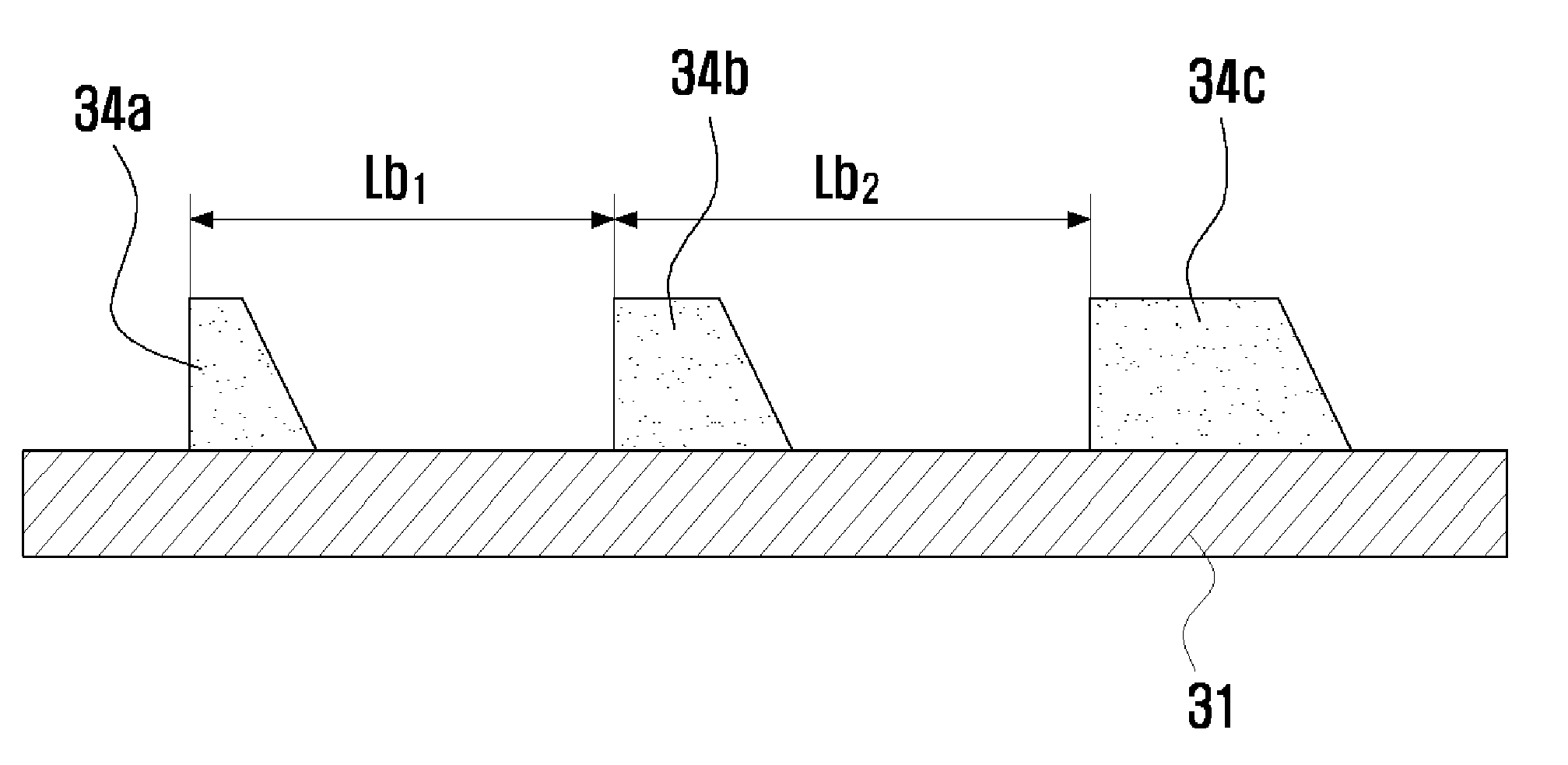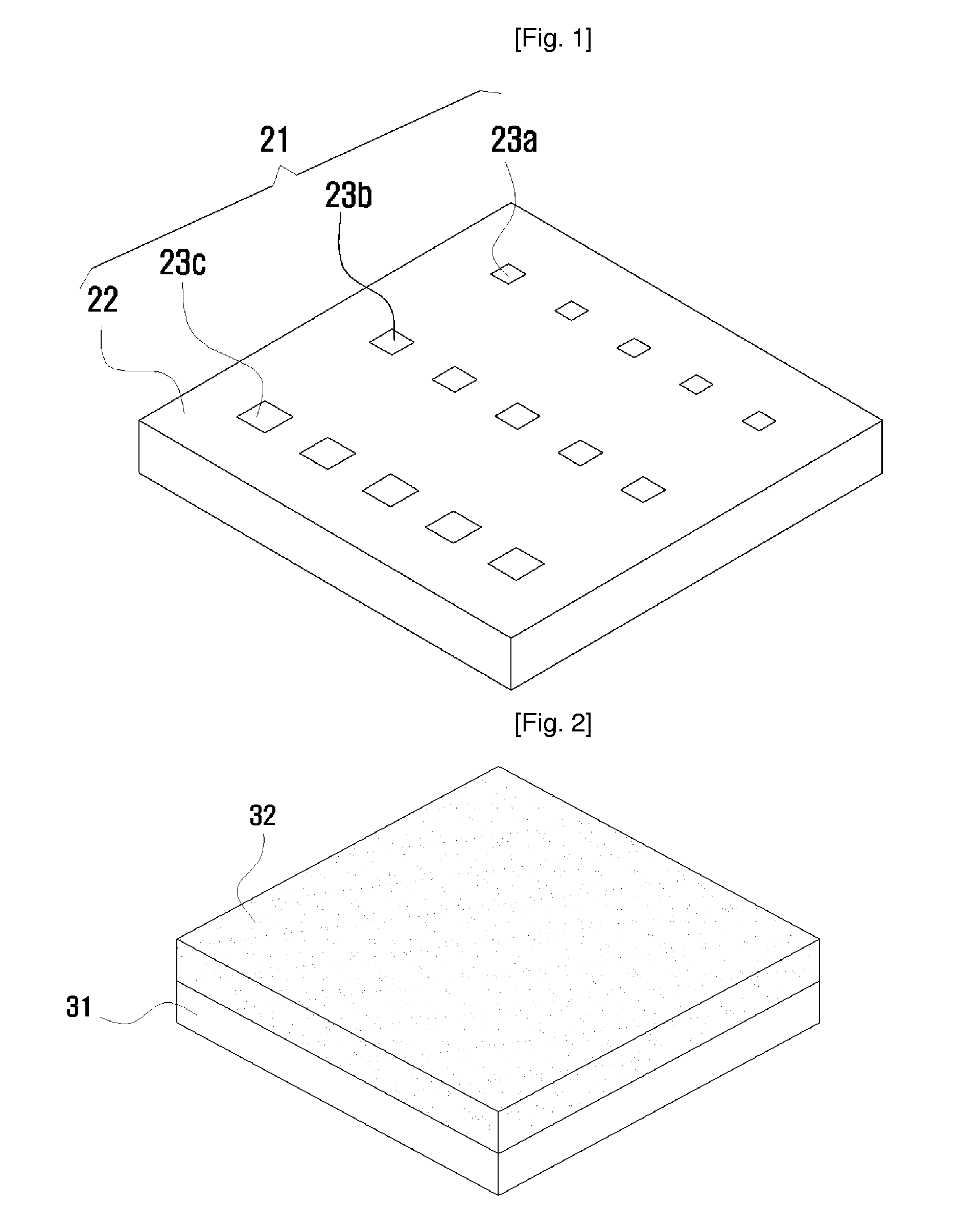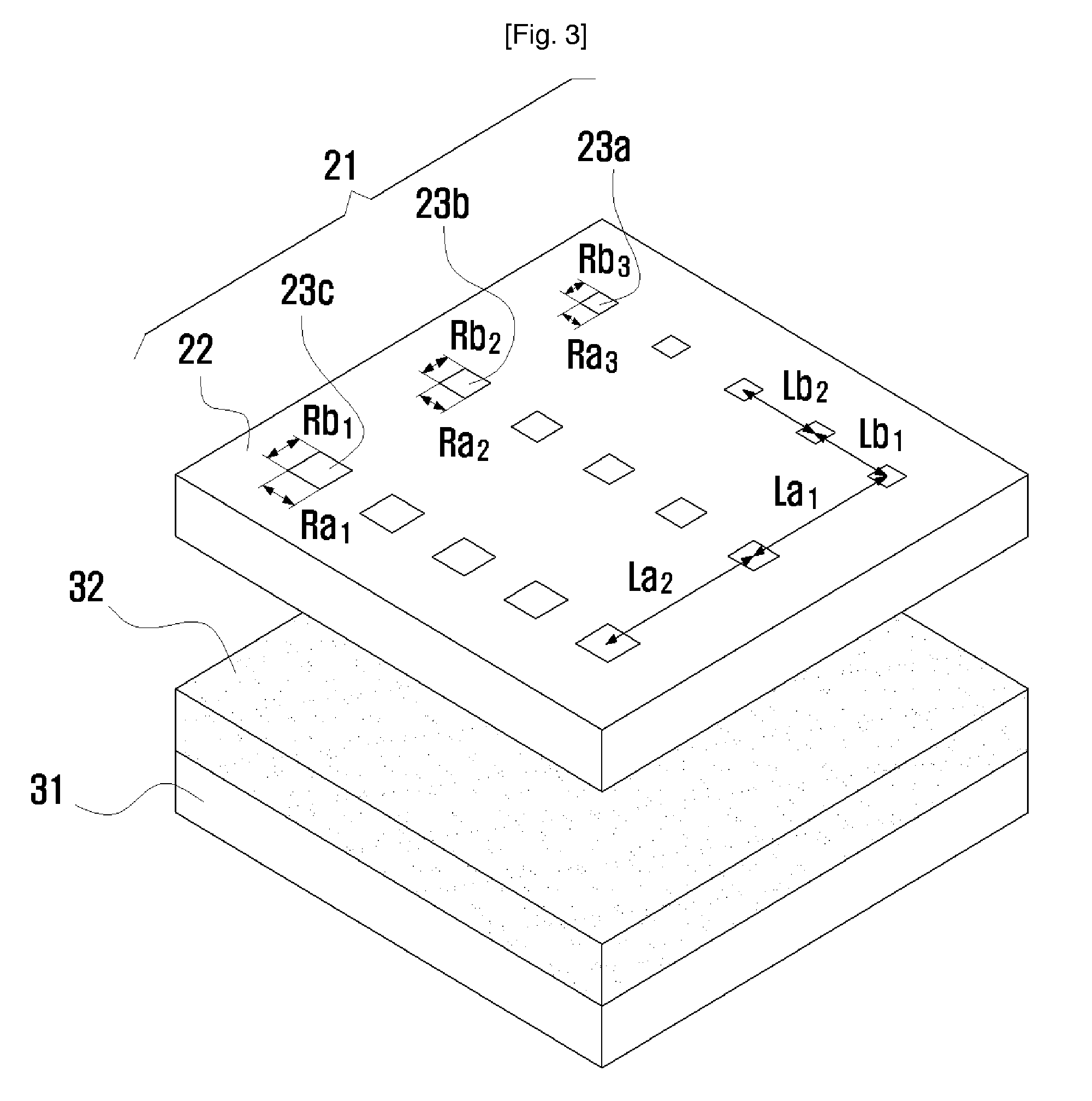Method for Manufacturing a Hybrid Microlens
- Summary
- Abstract
- Description
- Claims
- Application Information
AI Technical Summary
Benefits of technology
Problems solved by technology
Method used
Image
Examples
Embodiment Construction
[0024]Hereinafter, preferred embodiments of the present invention will be described in detail with reference to the accompanying drawings.
[0025]In the following description, detailed explanation of known related functions and constitutions may be omitted to avoid unnecessarily obscuring the subject manner of the present invention.
[0026]Further, the terms used in the description are defined considering the functions of the present invention and may vary depending on the intention or usual practice of a user or operator. Therefore, the definitions should be made based on the entire contents of the description.
[0027]In the present invention, a mask 21 to be used for a light-exposing process is first fabricated, as shown in FIG. 1. Here, as for the mask, a film mask or a chromium mask may be used depending on the precision of a pattern. In case of the use of a chromium mask, the mask can be fabricated with a precision of about 1 .
[0028]FIG. 1 is a perspective view of a mask for use in t...
PUM
 Login to View More
Login to View More Abstract
Description
Claims
Application Information
 Login to View More
Login to View More - R&D
- Intellectual Property
- Life Sciences
- Materials
- Tech Scout
- Unparalleled Data Quality
- Higher Quality Content
- 60% Fewer Hallucinations
Browse by: Latest US Patents, China's latest patents, Technical Efficacy Thesaurus, Application Domain, Technology Topic, Popular Technical Reports.
© 2025 PatSnap. All rights reserved.Legal|Privacy policy|Modern Slavery Act Transparency Statement|Sitemap|About US| Contact US: help@patsnap.com



